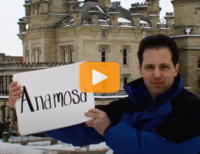Public rightly insists that that federal prison be excluded from new California county’s districts
by Peter Wagner, October 18, 2004
The California county of Santa Barbara is considering splitting itself in two, and the commission charged with drawing Supervisor districts for the proposed new Mission County ran straight in to controversy by including the 3,137 prisoners at the Lompoc federal prison within one district. Each district was supposed to contain about 41,000 residents, so this was a considerable non-resident boost to the population in one particular district.
According to the Santa Barbara News-Press, the two commissioners charged with drafting the districts “initially included the prison population with the reasoning that ‘just because someone is a convicted felon, they are part of the census population and deserve representation’.” This assumption wasn’t popular with the residents for good reason.
“I’d hate to see you use the prison population; that opens up a whole can of worms,’ said Bill Giorgi of Nojoqui Falls Ranch during a public hearing Monday in Solvang. ‘It’s been used for political purposes in the past.'”
The Chair of the Commission, Ted Tedesco supported the residents who wanted the prisoners excluded from the districts: “We really don’t provide them with any services…. I don’t feel comfortable including them.”
These arguments were persuasive. One of the commissioners that presented the original plan, Jack Boyson, told the Santa Maria Times why prisoners were excluded in the final plan resubmitted in October: “Prisoners don’t require county services, they don’t use our roads.”
Excluding the prisoners at the federal prison from the county redistricting was the right thing to do. Jack Boyson was partially right the first time, though. Prisoners do deserve representation in local government, but not in the community that contains the prison.
The federal prisoners at Lompoc are drawn from throughout the United States. While the Census Bureau counts prisoners as if they were residents of the prison town this is a methodological glitch that predates both modern constitutional redistricting practices and the incarceration boom. The fault is not with the idea of representation, but with the Census. Prisoners should be represented where the Census should count them: at home.
The story in Mission County mirrors what I have discovered elsewhere. Some counties include prisoners in county legislative districts and some exclude them; but every time the public discovers that non-resident prisoners are skewing local democracy, the public objects. In all known cases but one, the county legislature immediately reverses course and excludes the prison population from its districts. This entire controversy and its unnecessary burden on small counties with prisons could be avoided if the Census Bureau counted incarcerated people as part of their actual communities.
Sources: Supervisor districts sketched for split, by Erin Carlyle, Santa Maria Times, October 12, 2004; New lines being drawn in split plan, by Nora K. Wallace, News-Press (Santa Barbara, CA) September 1, 2004; and U.S. Census, Table PCT16 for Lompoc, CA;



